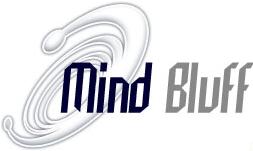- Thoughts & Ideas ▼
- Mental Tests ▼
- Online & Strategy Games ▼
- More Stuff ▼
- Popular Pages ▼
Eye Chart and Vision Test Online
Calculate your visual acuity to see if it's 20/20, 20/30, 20/40, etc.
|
Check your screen display: the top letter E (in the eye chart, below) should be almost 3 1/2 inches (88.7 millimeters) tall. The matching height is required to determine the real size reference. It should be possible to adjust the resolution and zoom level on your computer screen to match the desired criteria. Internet Explorer is recommended for its custom zoom, which allows fine-tuning. (See More info and details.)
This Eye Chart is styled after the classic Snellen eye chart (PDF file) and sized in proportion to its original computer-generated specifications. Directions: Stand 20 feet in front of the Eye Chart displayed on your computer screen. Do not squint as you read each set of letters. You will have to scroll down to see all the sets, but do not peek at the screen while scrolling. (If preferred, someone else can scroll down the screen for you.) Click on the box located on the right of the last set of letters that you can read accurately. (Reading a set of letters accurately means identifying most of the letters in a set.) When finished with the test, press SUBMIT at the bottom of the chart to see your RESULTS. The final designation of your visual acuity is printed in red on the RESULTS page. (The test's ability to describe your vision is approximate; for best results see an eye care professional.)
|
More info and details: The top letter E must be almost 3 1/2 inches in height (as displayed on your computer) to pass the testing requirements. On most computer screens and monitors, if the zoom level and/or screen resolution is manipulated, that condition should be possible to obtain. For example: the current model was tested on a 44-inch monitor (using IE) at screen resolution 1920 x 1080 with zoom level 81%. It was also tested on a 17-inch monitor with screen resolution 1366 x 768 using 178% zoom level. Experimentation should find the right balance. (Most versions of Internet Explorer are recommended for their custom zoom features.)
|
|

REFERENCES
http://www.i-see.org/block_letter_eye_chart.pdf
http://www.smbs.buffalo.edu/oph/ped/IVAC/IVAC.html
http://www.i-see.org/eyecharts.html
http://www.acs.psu.edu/drussell/Demos/RayTrace/Mirrors.html
http://www.cascadilla.com/eyecharts/mirror/